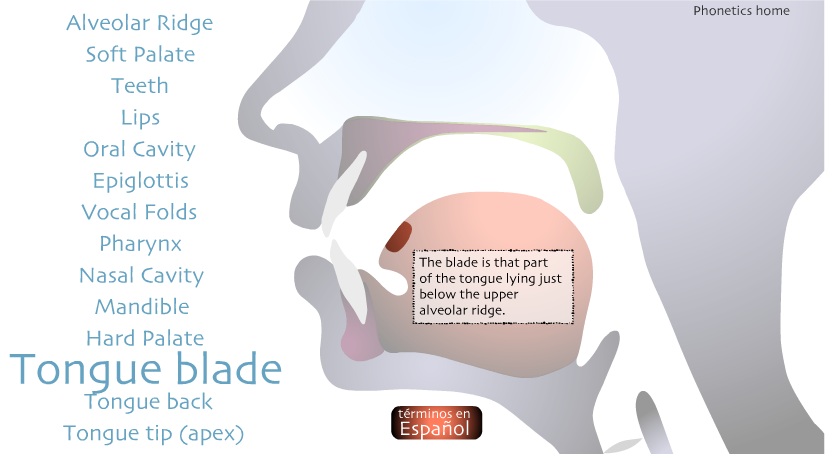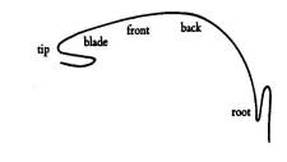Consonants
This week’s answers:
- Shaded areas in the IPA chart denote articulations that are deemed physically impossible. T/F?
- Empty, unshaded areas in the IPA chart denote articulations that are physically possible, but not attested in the world’s languages. T/F?
- There are languages in the world that use all the sounds represented in the IPA. T/F?
- Which of the following types of consonants is/are non-pulmonic?
- Pulmonic sounds: sounds initiated by means of the lungs
- Which type of click is rarest crosslinguistically?
Pulmonic and non-pulmonic airstream mechanisms
- Pulmonic egressive [lungs, air exits]
- Glottalic ingressive [larynx, air enter]
- voiced implosives
- closure at the place of articulation, air flow from oral cavity into lungs, vibrating vocal folds and release oral closure
- because larynx must always allow air flow in, always voiced.
- Glottalic egressive [larynx, air exit]
- ejectives
- closure at larynx and place of articulation, raise larynx to compress air and release oral closure
- because larynx must be closed, ejectives are always voiceless.
- Velaric ingressive [velum, air enter]
- clicks
- air pocket between velum/uvula and other active articulator, expand air pocket and releae
Exotic Sounds and phonetic environment
Consonant IPA chart can be broken down into
- Pulmonic consonants
- Non-pulmonic consonants
- Other symbols
- Diacritics
- Partial voicing/Slight raising, lowering/More, less rounding etc.
Important facts:
- Place of articulation form columns
- manner of articulation forms rows
- Empty boxes are not found in any language
- Shaded boxes are deemed impossible
Environment: The place in a word where the sound occurs
The environment may introduce variation in how a sound in pronounced.
- If 2 different sounds occur in the same environment
- And results in two different words
- The two words form a minimal pair and the sounds are contrastive.
Stops, nasals and fricatives (Obstruents + nasals)
- Languages generally choose either bilabial or labiodental fricatives as part of their inventory
- because few languages contrast these fricatives (hard to hear difference)
- Ewe in West Africa constrasts all (four labial fricatives)
- The coronal (dental/alveolar/post-alveolar) stops/nasals
- [t, d, n] spread across all 3 places
- dental variant: [t $\sqcap$, d $\sqcap$, n $_\sqcap$]
- alveolar: [t,d,n]
- post-alveolar variant: [t $_$, d $_$, n $__$]
- languages generally only choose one of these places to use contrastively
- the same symbol is used across all three regions here for each manner
- not many languages contrast dental and alveolar
- Exception: Malayalam and New Guinea
- Alveolar made with tongue tip (apical)
- Dental made with tongue blade (laminal)
- The oral plosives/stops cannot be nasalized.
- complete oral closure
- but nasalization lowers velum to allow airstream to go through nose (nasal stop)
- impossible to “pop” from pressure buildup

English coronal stops and nasals are alveolar by default.
However, positional variants include the dental/post-alveolar versions.
- The coronal fricatives
- Different symbols because often used contrastively.
- [s, z, ʃ, ʒ] (alveolar, post-alveolar fricatives) are grooved fricatives
- Groove in tongue creates channel of airflow (center lowered, sides raised)
- aka sibilants
- [ʃ] is more rounded than [s] $\Rightarrow$ bigger channel $\Rightarrow$ lower pitch.
- [θ, ð] (dental fricatives) are not: tongue flat
- nasalized fricatives are possible but are weaker
- airstream split into half as velum lowers: through nasal cavity and oral cavity.
- The labial/labiodental fricatives
- Typically not contrastive, languages choose one set.
- Retroflex
- Curled back tongue tip versions of the other coronals.
- Hindi has retroflex stops, fricatives and nasals
- Palatals
- Raising the tongue front and tongue body to the front palate.

Rhotics
Cover term for r-sounds. They are very heterogenous in production




